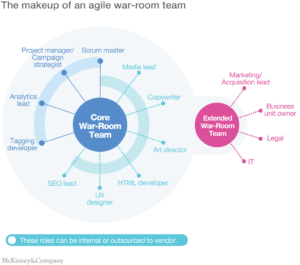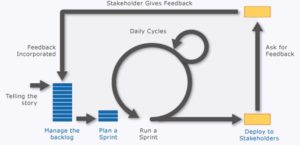 Today’s marketing landscape is more competitive than ever. Marketing teams are faster at finding the right messages required to exploit market niches. The market, too, shifts rapidly. Digital marketing best practices change every month, and so teams must adapt. This is where agile marketing can help.
Today’s marketing landscape is more competitive than ever. Marketing teams are faster at finding the right messages required to exploit market niches. The market, too, shifts rapidly. Digital marketing best practices change every month, and so teams must adapt. This is where agile marketing can help.
Just as the name suggests, agile marketing enables companies to move quickly and easily. It utilizes a strategic marketing approach that incorporates high-quality data and analytics to collaboratively source multiple marketing opportunities in rapid succession. Instead of following a set marketing plan that typically leads to large, well-planned campaigns, agile marketing strategies flow with the changes in the market, leading to smaller, more rapid campaigns.
However, agile marketing is not a one-person or even a two-person process. It involves an entire team that works together to develop ideas, put those plans into action, evaluate results and determine success. With this type of marketing, even failed trial runs are considered a success because they provide valuable data and analytical information.
A recent Forbes study revealed that 93 percent of businesses using agile marketing discovered they could release marketing campaigns at a faster rate. In addition, 87 percent believed that agile marketing made their team more productive and 80 percent felt it resulted in a better end-product. Other benefits include clearer measurability of ROI, improved adaptability, better transparency, an increase in employee satisfaction and the ability to respond to market changes faster.
Agile marketing also creates an inclusive work environment where everyone works together for a common end result. The consistent feedback also provides the company with a clearer vision in regard to customer and employee relations.

The first step of any agile transformation process is to establish a clear set of goals. For example, you may want to increase sales with a specific target audience or improve a certain step in the buyer’s overall journey. Once the goals are established, the next step is to select the team members. Think of people who could play a critical role in helping meet the end-goal. While this is a collaborative effort versus a hierarchy system, it does typically have a group leader in charge of moderating the process. These group leaders should not act as micro-managers. They should be servant leaders dedicated to identifying and removing blockers and obstacles that team members are facing.
In Agile, it is common to find work organized in what is referred to as sprints, short two- to six-week timeframes that help focus objectives. Before the sprint start, team members put together a wide range of marketing ideas; then, they prioritize these ideas according to greatest potential impact for resources invested. Once prioritization is done, execution can start.
 During the sprint, teams should have short, daily meetings to ensure that everyone is on the same page. This is not meant to be an opportunity to complain or criticize. It is meant to help the team lead identify and remove blockers. A good trick to keep these meetings from going on too long is to force meeting participants to stand up. A University of Missouri study concluded that they were in fact 34% shorter. It’s quite surprising how efficient communication can be when your legs are tiring out.
During the sprint, teams should have short, daily meetings to ensure that everyone is on the same page. This is not meant to be an opportunity to complain or criticize. It is meant to help the team lead identify and remove blockers. A good trick to keep these meetings from going on too long is to force meeting participants to stand up. A University of Missouri study concluded that they were in fact 34% shorter. It’s quite surprising how efficient communication can be when your legs are tiring out.
It’s important to keep in mind is that marketing test ideas are meant to be put into action as quickly as possible. An important aspect of Agile is being able to test more ideas than what would normally be possible. As each test run is completed, the team will collaboratively analyze the results and determine if the campaign was a success or failure, or if marketing strategies need to be adjusted. Once a campaign is deemed successful, the team works to make it more scalable for company-wide integration.
Transforming your business to agile marketing takes more than just creating several innovative teams. It requires an entire culture shift in the workplace. It won’t do your company any good to have an agile marketing team in place if their ideas are constantly held up at different levels, such as upper management, finance, legal or IT. It is crucial that everyone, even an employee who is not part of the team’s inner core, understands the importance of this transformation and what their responsibilities are in ensuring the team’s efforts are not halted.
If your company is experiencing difficulties due to the constantly changing market, now is the time to make the transformation to an agile marketing process. You can actually save on marketing costs, improve productivity and provide a higher-quality end product.